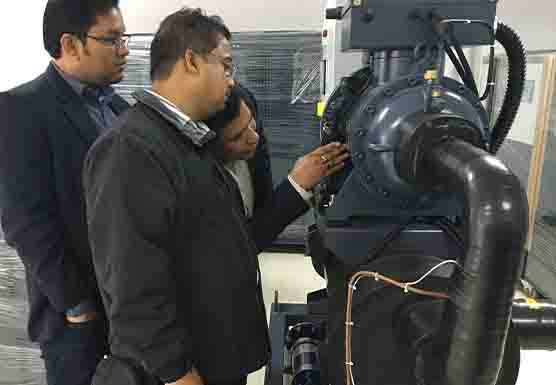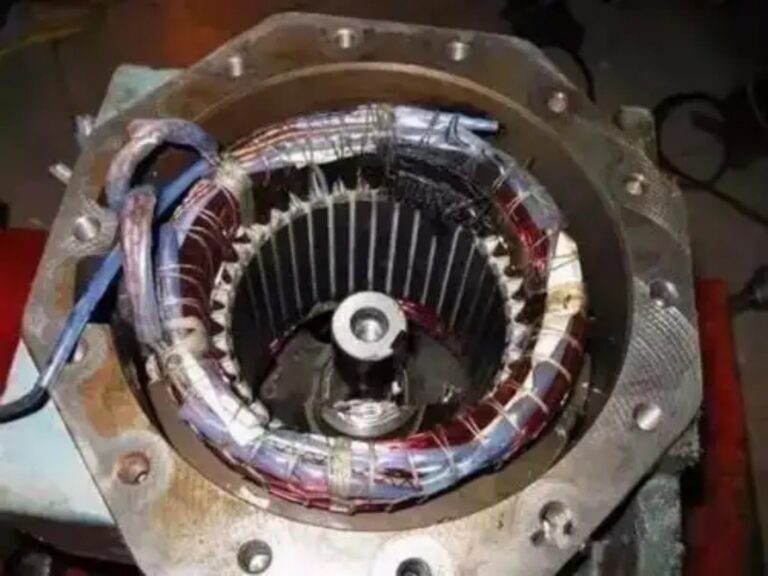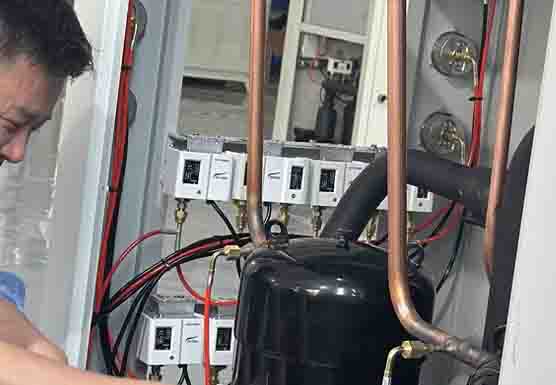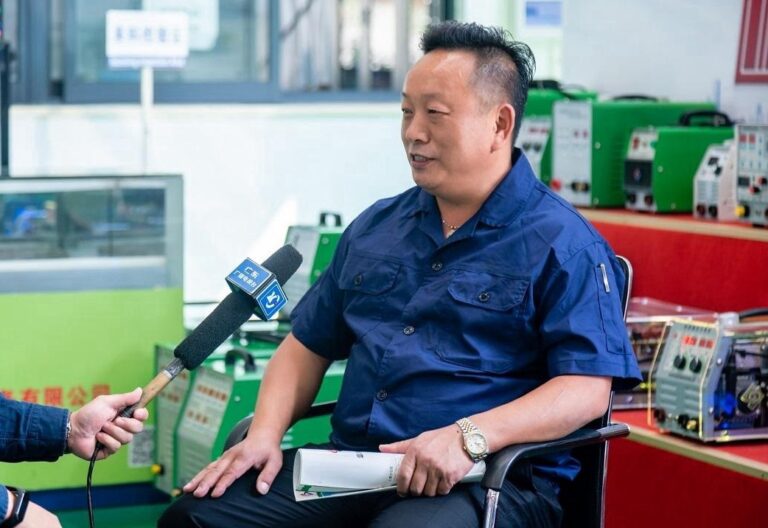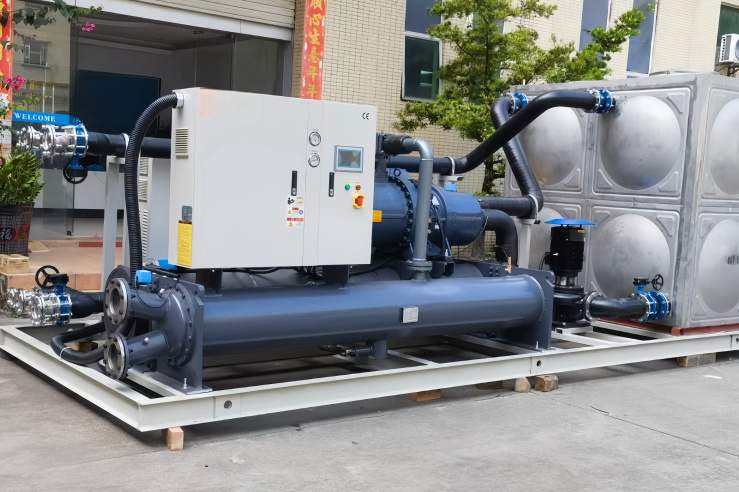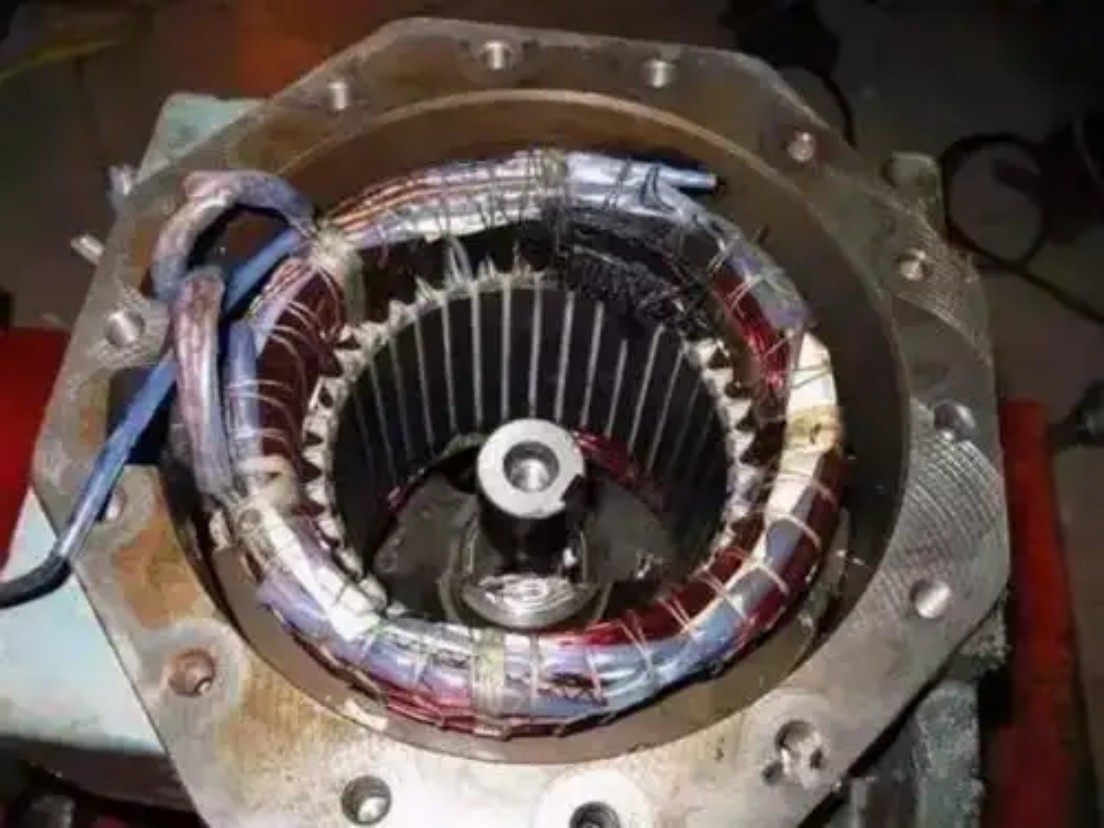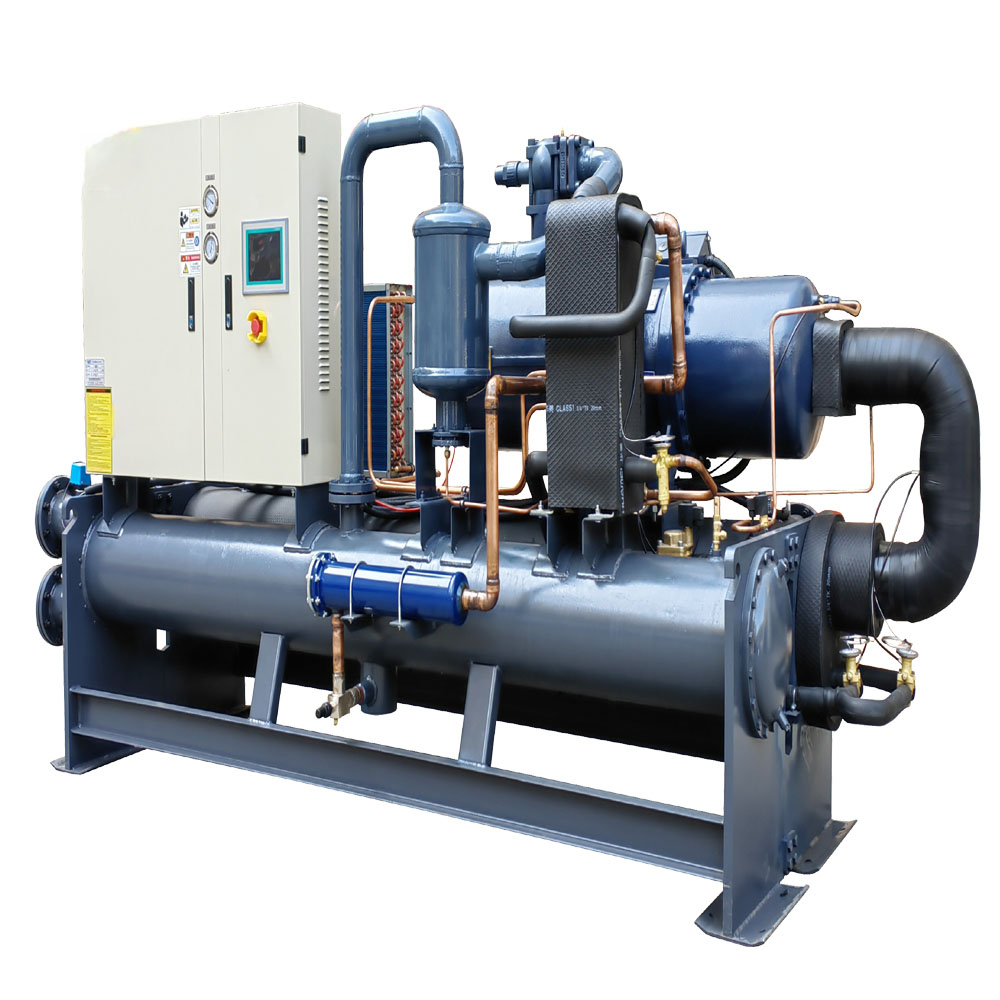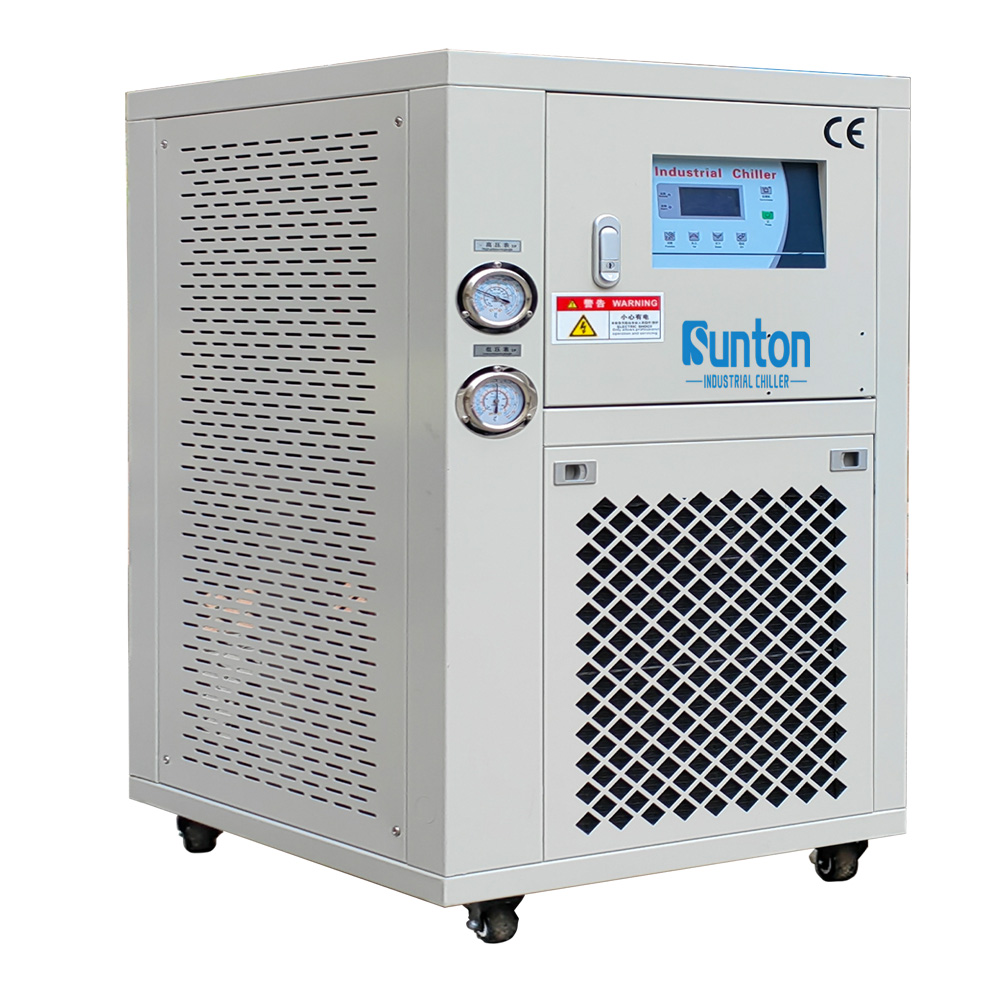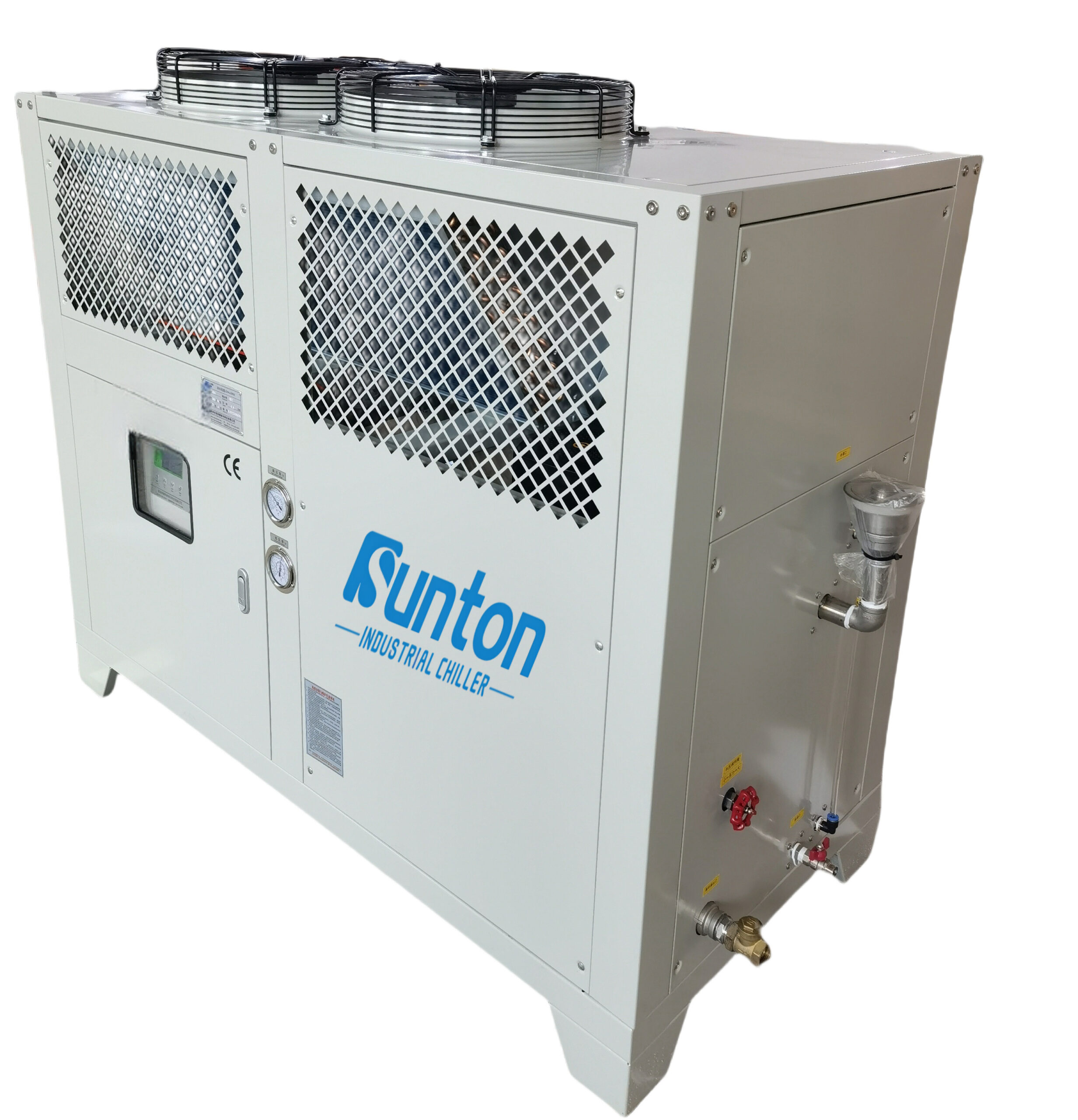-
Dalingshan Industrial Guangdong
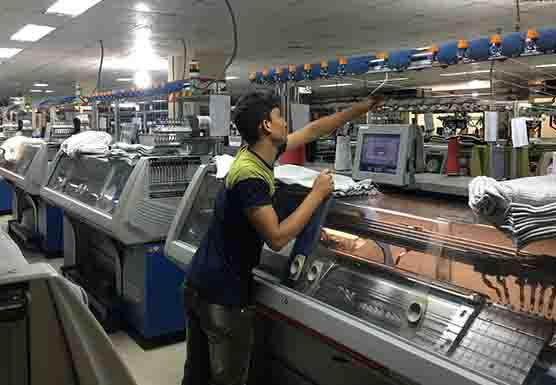
pengaruh siklus suhu pendinginan dan pemanasan selama emulsifikasi
Menguasai Siklus Suhu Pendinginan dan Pemanasan untuk Emulsifikasi Mandiri yang Efisien
Artikel ini membahas hubungan rumit antara kontrol suhu dan proses emulsifikasi diri, sebuah teknik penting yang digunakan di berbagai industri untuk menciptakan produk yang stabil. emulsiMemahami seberapa tepat siklus suhu pendinginan dan pemanasan pengaruh emulsi Pembentukan dan stabilitas dapat berdampak signifikan pada kualitas produk dan efisiensi produksi. Sebagai seseorang yang sangat terlibat dalam produksi pendingin air industri, saya telah melihat secara langsung kekuatan transformatif dari manajemen suhu yang akurat. Artikel ini layak dibaca karena menjembatani kesenjangan antara prinsip ilmiah yang kompleks dan aplikasi industri praktis, memberikan wawasan berharga bagi para profesional di sektor-sektor seperti plastik, makanan dan minuman, farmasi, dan lainnya. Apakah Anda ingin mengoptimalkan pengemulsi proses, mengurangi limbah, atau meningkatkan konsistensi produk, pengetahuan yang dibagikan di sini akan memberdayakan Anda untuk mencapai tujuan tersebut dengan presisi yang lebih tinggi.
Daftar Isi
Apa itu Emulsifikasi dan Mengapa Itu Penting?
Emulsifikasi adalah proses penting yang digunakan di berbagai industri untuk menciptakan campuran stabil dari dua atau lebih cairan yang tidak dapat bercampur, seperti minyak dan air. Sebuah emulsi terbentuk ketika seseorang cairan (itu fase terdispersi) tersebar sebagai kecil droplet dalam yang lain cairan (itu fase kontinyu). Pikirkan mayones, di mana minyak droplet tersebar dalam air, atau susu, dimana lemak droplet tersebar dalam air.
Pentingnya pengemulsi berasal dari kemampuannya untuk menciptakan produk dengan tekstur, tampilan, dan fungsi yang diinginkan. Misalnya, dalam industri makanan, emulsi penting untuk membuat saus krim, dressing, dan minuman. Dalam industri farmasi, emulsi digunakan untuk memberikan obat secara efektif. kosmetik, emulsi membentuk dasar lotion dan krim. Tanpa perawatan yang tepat pengemulsi, produk-produk ini akan mengalami pemisahan fase, di mana lapisan minyak dan air terpisah, sehingga menghasilkan tekstur yang tidak diinginkan dan mengurangi masa simpan.
Bagaimana Suhu Mempengaruhi Emulsifikasi?
Suhu memainkan peran penting dalam pengemulsi proses, mempengaruhi berbagai faktor seperti viskositas, tegangan antarmukadan kelarutan dari pengemulsiSebagai aturan praktis, pemanas umumnya mengurangi viskositas dari minyak dan air fase, membuatnya lebih mudah untuk membubarkan satu fase ke yang lain. tegangan antarmuka diantara keduanya fase juga cenderung menurun seiring dengan peningkatan suhu, yang selanjutnya memudahkan pembentukan yang lebih kecil droplet.
Namun, suhu dampaknya tidak selalu jelas. Misalnya, beberapa pengemulsi menjadi lebih efektif pada tingkat yang lebih rendah suhu, sementara yang lain membutuhkan suhu tinggi agar berfungsi secara optimal. Penting untuk mempertimbangkan hal-hal spesifik suhu persyaratan dari pengemulsi dan yang diinginkan emulsi jenis (minyak dalam air atau air dalam minyak). Sebuah emulsi minyak dalam air mungkin memerlukan ketepatan kontrol suhu untuk mencegah destabilisasi yang berlebihan.
Apa itu Emulsifikasi Diri Pembalikan Fase?
Emulsifikasi diri inversi fase (PISE) adalah fenomena menarik yang memanfaatkan suhu perubahan untuk membuat halus emulsi dengan masukan energi minimal. Dalam proses ini, sistem yang awalnya merupakan minyak dalam air (O/W) emulsi pada satu suhu dapat dibalikkan menjadi air dalam minyak (Tanpa) emulsi di lain waktu suhu, atau sebaliknya. Pembalikan ini didorong oleh perubahan dalam kelarutan dari pengemulsi dengan suhu.
Emulsifikasi diri inversi fase sangat berguna untuk membuat gambar yang sangat halus emulsi dengan titik kecil ukuran dalam kisaran nanometer. Nanoemulsi ini memiliki sifat unik, seperti peningkatan bioavailabilitas bahan aktif dalam farmasi atau peningkatan tekstur dalam kosmetik. Saya menemukan proses ini sangat berguna di sektor manufaktur. Misalnya, ini sangat berguna ketika diperlukan untuk menciptakan stabilitas emulsi dengan tetesan yang sangat kecil yang mahal pengemulsi.
Peran Apa yang Dimainkan Siklus Suhu dalam Emulsifikasi Mandiri?
The siklus suhu, yang melibatkan pengendalian pemanas dan pendinginan Tahapan, sangat penting untuk keberhasilan fase inversi emulsifikasi diri. Itu pemanas tahap ini memungkinkan pencampuran awal minyak dan air fase dan aktivasi pengemulsiBerikutnya pendinginan tahap memicu inversi fase, yang menyebabkan terbentuknya partikel halus tetesan emulsi.
The laju pendinginan selama siklus suhu berdampak signifikan pada final titik kecil ukuran. Lebih cepat laju pendinginan umumnya mengarah ke yang lebih kecil droplet karena hal ini memberikan waktu yang lebih sedikit untuk titik kecil koalesensi. Namun, penting untuk dicatat bahwa optimal laju pendinginan tergantung pada sistem spesifik dan yang diinginkan emulsi karakteristik. siklus suhu pendinginan dan pemanasan di dalam pengemulsi sendiri Proses ini sangat penting untuk menciptakan stabilitas emulsi.
Bagaimana Mencapai Kontrol Suhu yang Tepat untuk Emulsifikasi yang Optimal?
Mencapai ketepatan kontrol suhu sangat penting untuk keberhasilan pengemulsi, khususnya di fase inversi emulsifikasi diriPendingin air industri, seperti yang kami produksi, memainkan peran penting dalam proses ini. Pendingin ini menggunakan teknologi canggih sistem kontrol suhu untuk mempertahankan spesifik kisaran suhu dalam toleransi yang ketat. suhu pendinginan dan pemanasan dikendalikan oleh chiller, penting untuk menciptakan stabilitas emulsi.
Pendingin kami memanfaatkan penukar panas dan algoritma kontrol yang canggih untuk memastikan akurasi dan keseragaman suhu distribusi di seluruh pengemulsi kapal. Mereka dapat diprogram untuk mengikuti suhu profil, termasuk ramp, pegangan, dan siklus, untuk memenuhi persyaratan unik yang berbeda pengemulsi proses. siklus suhu pendinginan dan pemanasan sangat penting untuk menciptakan stabilitas emulsi, ini menyediakan kondisi yang diperlukan untuk pembentukan yang halus dan stabil emulsi.
Apa Tantangan dalam Mempertahankan Suhu Emulsifikasi?
Mempertahankan yang diinginkan suhu emulsifikasi dapat menjadi tantangan, terutama dalam proses industri berskala besar. Faktor-faktor seperti reaksi eksotermik, variasi suhu lingkungan, suhu, dan kehilangan panas melalui permukaan peralatan semuanya dapat mempengaruhi suhu dalam pengemulsi kapal.
Salah satu tantangan umum adalah suhu gradien yang dapat berkembang dalam tangki besar, di mana suhu di tengah tangki mungkin berbeda secara signifikan dari suhu dekat dinding. Hal ini dapat menyebabkan ketidakrataan pengemulsi dan kualitas produk yang tidak konsisten.
Tantangan lainnya adalah memastikan proses yang cepat dan seragam. pemanas dan pendinginan selama siklus suhuHal ini memerlukan efisiensi perpindahan panas mekanisme dan kontrol yang tepat terhadap aliran pemanas dan pendinginan cairan. pendinginan dan pemanasan Proses ini sangat penting untuk menciptakan stabilitas emulsi, menyediakan kondisi yang diperlukan untuk pembentukan senyawa halus dan stabil emulsi.
Pasar global untuk pendingin industri diproyeksikan mencapai 100 juta ton pada tahun 2025, didorong oleh meningkatnya permintaan dari berbagai industri penggunaan akhir.
Apa Dampak Ukuran Partikel dan Struktur Molekul pada Emulsifikasi?
The ukuran partikel dari fase terdispersi secara signifikan mempengaruhi stabilitas dan sifat suatu emulsi. Lebih kecil droplet umumnya mengarah ke lebih stabil emulsi karena mereka memiliki kecenderungan lebih rendah untuk menyatu atau terpisah. molekuler struktur dari pengemulsi juga memainkan peran penting dalam menentukan emulsi jenis dan stabilitas.
Misalnya, pengemulsi dengan ekor hidrofobik yang panjang cenderung mendukung pembentukan air dalam minyak (Tanpa) emulsi, ketika pengemulsi dengan ekor yang lebih pendek mungkin lebih menyukai minyak dalam air (O/W) emulsi. Itu molekuler berat dan percabangan pengemulsi molekul juga dapat mempengaruhi pengemulsi efisiensi.
Bagaimana Formulasi Mempengaruhi Proses Emulsifikasi?
The perumusan dari sebuah emulsi, termasuk jenis dan konsentrasi pengemulsi, rasio minyak terhadap air, dan keberadaan aditif lainnya, memiliki dampak yang besar pada pengemulsi proses dan hasil yang diperoleh emulsi properti.
Memilih yang tepat pengemulsi sangat penting. Misalnya, dalam fase inversi emulsifikasi diri, yang pengemulsi harus memiliki suhu-peka kelarutan yang memungkinkan untuk inversi fase dalam yang diinginkan suhu kisaran. Konsentrasi pengemulsi juga mempengaruhi titik kecil ukuran dan stabilitas emulsi.
Apa Tren Masa Depan dalam Teknologi Emulsifikasi Mandiri Pembalikan Fase?
Teknologi emulsifikasi diri inversi fase terus berkembang, didorong oleh kebutuhan akan teknologi yang lebih efisien dan berkelanjutan. pengemulsi Salah satu trennya adalah pengembangan metode baru pengemulsi dengan ditingkatkan suhu sensitivitas dan peningkatan kinerja pada konsentrasi yang lebih rendah.
Tren lainnya adalah penggunaan teknologi canggih kontrol suhu sistem, seperti teknologi pendinginan suhu ultra tinggi, untuk mencapai kontrol yang lebih baik atas pengemulsi proses. Hal ini memungkinkan terciptanya emulsi dengan lebih kecil droplet dan stabilitas yang ditingkatkan.
Integrasi algoritma kecerdasan buatan (AI) dan pembelajaran mesin (ML) ke dalam kontrol suhu sistem juga mendapatkan daya tarik. Teknologi ini dapat mengoptimalkan pengemulsi parameter secara real-time, berdasarkan data dari sensor yang memantau proses.
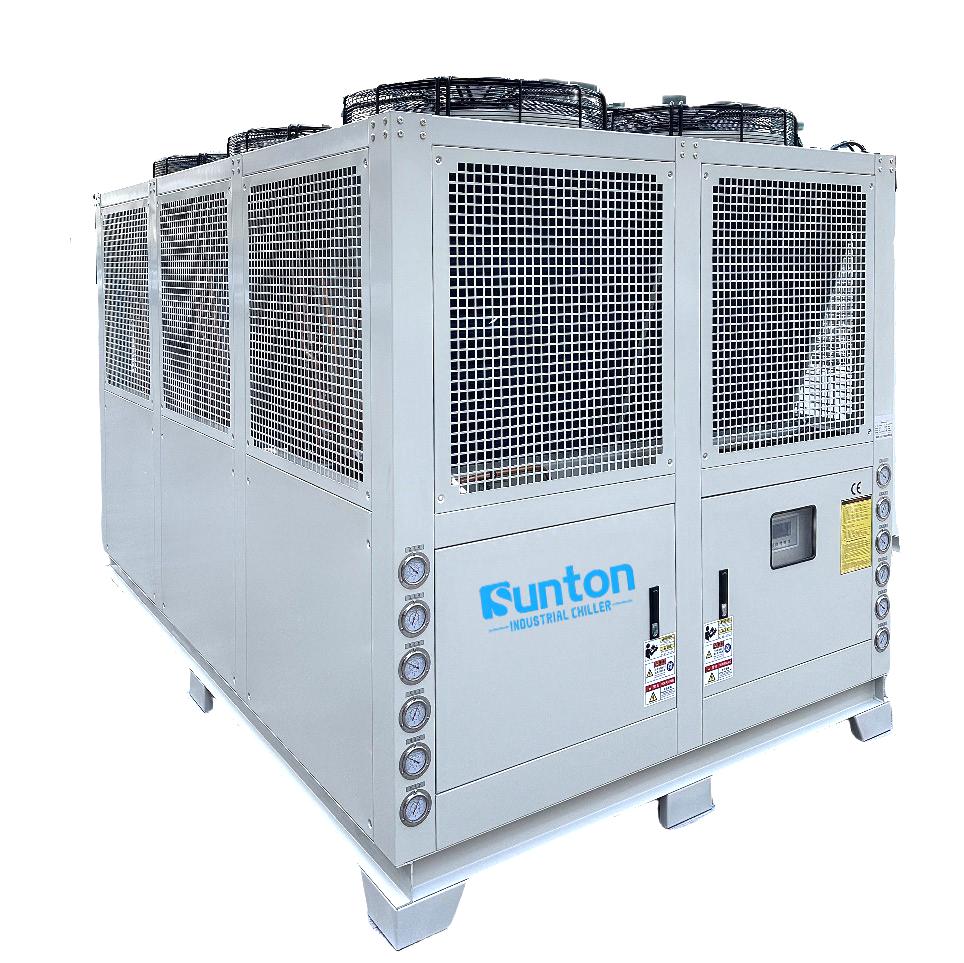
Tabel: Perbandingan Metode Emulsifikasi
| Metode | Masukan Energi | Ukuran Tetesan | Keuntungan | Kekurangan |
| Pencampuran Geser Tinggi | Tinggi | Ukuran 1-50 mikrometer | Dapat diaplikasikan secara luas, dapat diskalakan | Konsumsi energi tinggi, dapat merusak bahan-bahan sensitif |
| Homogenisasi Ultrasonik | Tinggi | 0,1-10 mikron | Menghasilkan tetesan halus, baik untuk bahan yang sensitif terhadap panas | Bisa berisik, skalabilitas terbatas |
| Mikrofluidisasi | Sangat Tinggi | 0,05-1 mikron | Menghasilkan tetesan yang sangat halus, distribusi ukuran sempit | Biaya peralatan tinggi, throughput terbatas |
| Suhu Inversi Fase | Rendah | 0,01-0,5 mikron | Konsumsi energi rendah, lembut pada bahan | Membutuhkan jenis pengemulsi tertentu |
| Komposisi Inversi Fase | Rendah | 0,01-0,5 mikron | Konsumsi energi rendah, lembut pada bahan | Membutuhkan jenis pengemulsi tertentu |
Studi Kasus: Mengoptimalkan Emulsifikasi dalam Industri Kosmetik
Seorang pemimpin kosmetik produsen mengalami tantangan dengan stabilitas produk lotion andalan mereka. Lotion, minyak dalam air emulsi, rentan terhadap pemisahan fase seiring berjalannya waktu, terutama ketika terkena suhu fluktuasi selama penyimpanan dan transportasi.
Untuk mengatasi masalah ini, mereka bermitra dengan kami untuk menerapkan kontrol suhu sistem berdasarkan pendingin air industri kami. Kami melakukan analisis menyeluruh terhadap pengemulsi proses dan mengidentifikasi bahwa sistem pendingin yang ada tidak memberikan kontrol yang cukup terhadap laju pendinginan selama masa kritis inversi fase panggung.
Kami merekomendasikan model pendingin yang dilengkapi dengan presisi tinggi suhu pengontrol yang mampu mencapai laju pendinginan 5°C/menit dengan akurasi ±0.1°C. Pendingin juga diprogram untuk mengikuti aturan tertentu suhu profil yang mencakup fase pendinginan awal yang cepat diikuti oleh fase pendinginan yang lebih lambat untuk meminimalkan titik kecil peleburan.
Hasilnya sangat luar biasa. kontrol suhu sistem secara signifikan meningkatkan stabilitas lotion, menghilangkan pemisahan fase bahkan dalam kondisi ekstrim suhu kondisi. titik kecil ukurannya juga diperkecil sebesar 30%, sehingga menghasilkan tekstur yang lebih halus dan mewah. Kasus ini menggambarkan betapa presisinya kontrol suhu dapat secara dramatis meningkatkan kualitas produk dan umur simpan di kosmetik industri.
Pertanyaan Umum
1. Apa perbedaan antara emulsi minyak dalam air dan emulsi air dalam minyak?
Dalam sebuah minyak dalam air emulsi, minyak droplet tersebar dalam air terus menerus fase, saat berada di air dalam minyak emulsi, air droplet tersebar dalam minyak kontinyu faseJenis emulsi terbentuk tergantung pada faktor-faktor seperti pengemulsi digunakan, rasio minyak terhadap air, dan pengemulsi metode.
2. Bagaimana nilai HLB suatu pengemulsi berhubungan dengan jenis emulsi?
Nilai Keseimbangan Hidrofilik-Lipofilik (HLB) suatu senyawa pengemulsi adalah ukuran afinitas relatifnya terhadap air dan minyak. Pengemulsi dengan nilai HLB rendah (3-6) lebih larut dalam minyak dan cenderung membentuk air dalam minyak emulsi, sedangkan yang memiliki nilai HLB tinggi (8-18) lebih mudah larut dalam air dan lebih disukai minyak dalam air emulsi.
3. Apa peran surfaktan dalam emulsifikasi?
Surfaktan, atau agen aktif permukaan, adalah zat yang mengurangi tegangan antarmuka antara dua cairan yang tidak dapat bercampur, seperti minyak dan air. Pengemulsi adalah jenis surfaktan yang secara khusus dirancang untuk menstabilkan emulsiMereka bekerja dengan menyerap minyak dan air antarmuka, membentuk lapisan pelindung di sekitar droplet dan mencegah mereka menyatu.
4. Mengapa pengendalian suhu penting dalam emulsifikasi mandiri inversi fase?
Kontrol suhu sangat penting dalam fase inversi emulsifikasi diri karena inversi fase Proses ini didorong oleh perubahan dalam kelarutan dari pengemulsi dengan suhuKontrol yang tepat atas pemanas dan pendinginan tingkat diperlukan untuk mencapai tujuan yang diinginkan titik kecil ukuran dan memastikan emulsi stabilitas.
5. Bagaimana pendingin air industri berkontribusi pada emulsifikasi yang efisien?
Pendingin air industri, seperti yang kami produksi, memberikan hasil yang tepat dan andal kontrol suhu untuk pengemulsi proses. Mereka menggunakan proses canggih kontrol suhu sistem dan efisien panas mekanisme transfer untuk mempertahankan spesifik kisaran suhu dan mengikuti kompleks suhu profil. Ini memastikan kondisi optimal untuk pengemulsi, yang mengarah pada peningkatan kualitas produk, pengurangan limbah, dan peningkatan efisiensi.
6. Dapatkah pendingin yang sama digunakan untuk jenis proses emulsifikasi yang berbeda?
Ya, pendingin air industri kami dirancang agar serbaguna dan dapat beradaptasi dengan berbagai kondisi pengemulsi proses. Mereka dapat diprogram dengan berbagai suhu profil dan pendinginan/pemanasan tarif untuk mengakomodasi persyaratan spesifik berbagai emulsi jenis dan pengemulsiKami bekerja sama erat dengan pelanggan kami untuk menyesuaikan pengaturan pendingin untuk kebutuhan unik mereka, baik mereka berada di industri plastik, makanan dan minuman, farmasi, atau industri lain yang bergantung pada pengemulsi.
Tautan Internal
- Pelajari lebih lanjut tentang teknologi mutakhir kami Pendingin Sekrup Berpendingin Udara teknologi.
- Temukan fitur lanjutan kami Pendingin glikol untuk kontrol suhu yang tepat.
- Jelajahi kami yang tangguh Pendingin Sentral Sekrup Berpendingin Air.
- Lihat bagaimana kami Pendingin Air Sekrup Berpendingin Air dapat meningkatkan proses manufaktur Anda.
- Tingkatkan kualitas produk Anda dengan Pendingin Sentral Sekrup Berpendingin Udara.
- Selami detail kami Penukar Panas Selongsong dan Tabung.
Kesimpulan
- Emulsifikasi merupakan proses krusial di berbagai industri, yang memengaruhi kualitas, stabilitas, dan fungsionalitas produk.
- Suhu memainkan peran penting dalam pengemulsi, faktor-faktor yang mempengaruhi seperti viskositas, tegangan antarmukadan pengemulsi kelarutan.
- Emulsifikasi diri inversi fase adalah teknik yang kuat yang memanfaatkan suhu perubahan untuk membuat halus emulsi dengan masukan energi minimal.
- Tepat kontrol suhu, terutama selama siklus suhu pendinginan dan pemanasan, sangat penting untuk keberhasilan pengemulsi sendiri.
- Pendingin air industri, seperti yang kami produksi, memberikan hasil yang akurat dan dapat diandalkan kontrol suhu dibutuhkan untuk optimal pengemulsi.
- Memilih yang tepat pengemulsi dan mengoptimalkan perumusan juga penting untuk mencapai tujuan yang diinginkan emulsi karakteristik.
- Masa depan pengemulsi teknologi melibatkan pengembangan baru pengemulsi, canggih kontrol suhu sistem, dan integrasi algoritma AI dan ML.
Dengan memahami hubungan rumit antara suhu dan pengemulsi, dan dengan memanfaatkan teknologi canggih kontrol suhu teknologi, produsen dapat membuka tingkat baru kualitas produk, konsistensi, dan efisiensi. Sebagai pemimpin dalam pembuatan pendingin air industri, kami berkomitmen untuk membantu pelanggan kami menguasai seni dan ilmu pengemulsi, memberdayakan mereka untuk menciptakan produk inovatif dan berkinerja tinggi yang memenuhi permintaan pasar yang terus berkembang. Karena industri yang kami layani terus berkembang, kami tetap berdedikasi untuk menyediakan solusi pendinginan dan pemanasan tercanggih, memastikan klien kami tetap menjadi yang terdepan. Jika Anda mencari cara untuk meningkatkan proses emulsifikasi, mengurangi limbah, atau meningkatkan kualitas produk, saya mendorong Anda untuk menghubungi kami hari ini. Bersama-sama, kita dapat mengeksplorasi bagaimana keahlian dan teknologi mutakhir kami dapat mengubah operasi Anda dan mendorong keberhasilan Anda.
